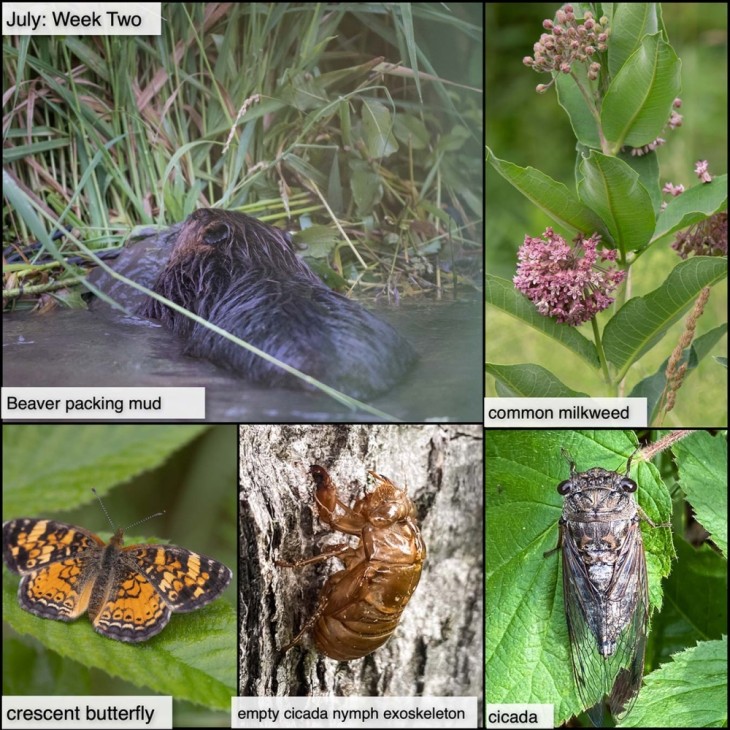This week in the woods, the beaver empire’s plans to turn the entire continent into a pond are going swimmingly, and if you look around an active beaver dam, you’re likely to see recent work to reinforce and in many cases extend damming. In addition to bringing wood to dam sites, beavers will also add fine vegetation such as grass, pile on rocks, and, as in this photo, pack in big gobs of mud (if you watch them doing this, you’re likely to see the mud plumes behind them as they swim back and forth from their mud excavations.) Although beavers aren’t universally beloved, the animals play a vital role in improving and maintaining watersheds, for example, by slowing down flood water and spreading that water horizontally out into floodplains, filtering sediments, and creating habitat for plants, fish and many other life forms.
The ongoing deluge of rain seems to have deterred many of the insects that populate common milkweed patches this time of year, or at least, it seems to have slowed the insects down. However, if you inspect the blooms and leaves carefully, even when it’s actively raining, you’re likely to find some bedraggled ants, beetles and spiders. As the sun returns later this week, expect a boom in less rain-hardy insects, such as moths and butterflies.
They’re back. Last-instar cicada nymphs are climbing out of the ground and crawling up tree trunks, where they molt their exoskeletons and emerge as winged adults. There are several species active in our area, and as July progresses you’ll hear a growing chorus of the males’ buzzy “calls.” They emit these sounds by vibrating their abdomens. Note: although these bug-eyed sap sippers are large, buzzy and generally freaky for the insect-squeamish, we recommend seeking out their empty nymph exoskeletons on tree bark; these can be can gently unhooked from the bark, and gently (and stealthily) attached to a brother or sister’s clothing.
Finally, there seems to be an abundance of crescent butterflies flying around now, in between rain storms. Both pearly crescents and their near look-alikes, northern crescents, rely on asters for their caterpillars’ food supply, so look for them along weedy roadsides and in meadows.
What have you noticed in the woods this week? Submit a recent photo for possible inclusion in our monthly online Reader Photo Gallery.



Discussion *